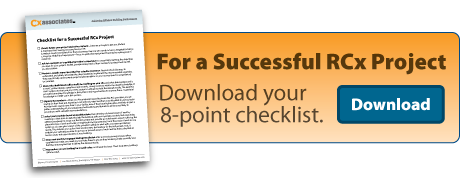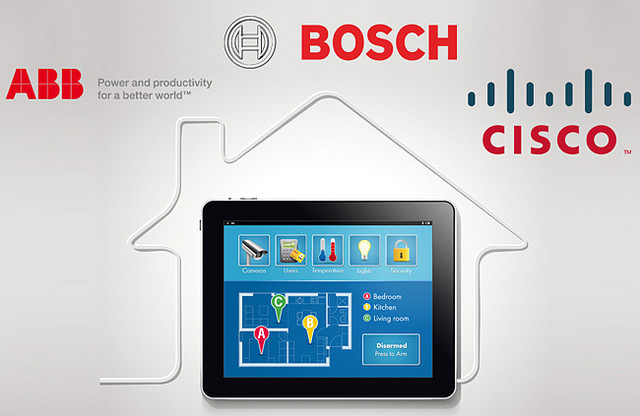In business, as in life, there is risk with every complex project you begin. In retrocommissioning (RCx) projects, the main risks for commercial building owners and managers are threefold: the savings will not be realized, the scope will increase, and the savings will not be persistent after the job is complete. These issues are also on the minds of every engineer who accepts a retrocommissioning project. Managing the level of risk is complicated to say the least, but there are common sense ways to protect yourself, your partnership with the retrocommissioning engineer, and the project.
1. Mitigate Unrealized Savings Through Metering
A common example of unrealized savings can be found in constant speed pumps. Constant speed pumps are sized to work with a design head pressure and gallons per minute (GPM), and constant speed fans are sized to work with a design static pressure and cubic feet per minute (CFM). If the system is oversized, the pump or fan will follow its design curve and will operate at a lower electrical demand than at its designed capacity.
We have found many times that pumps or fans are drawing considerably less power than the size would have you believe. If your RCx engineer calculates the energy savings potential of an existing pump or fan strictly based on its size, there is a good chance the potential energy savings of a variable speed drive (VSD) measure will be overestimated. For this reason, we recommend always metering the equipment prior to developing an energy savings opportunity.
2. Mitigate Sudden Scope Creep with a Clear Document
Before starting the project, work with the RCx engineer to define a precise outline for the retrocommissioning job – what problems is it trying to solve, what building systems are being addressed, and what building systems are not being addressed. If you ask for a focus on the central chilled water plant chillers and pumps, but the engineer is not touching the 25-year-old cooling towers and the condenser water piping, be sure this is documented and discussed very clearly with the RCx engineer. Then, if the condenser water piping is found to be clogged and in need of replacement, both you and the engineer will understand that this work is an unforeseen add-on to the project’s implementation phase. There may always be a surprise waiting around the corner, but a clear scoping document and definition of the project will go a long way to open communication and understanding between you and the retrocommissioning agent. Surprises are rarely positive – preparation for the unknown is imperative!
3. Mitigate Degradation of Achieved Savings
Say the retrocommissioning project has gone swimmingly and is now complete. All the “T”s have been crossed and the “I”s have been dotted. The RCx engineer leaves the project after proving the savings through metering, you have a glowing report, and you both feel very good about the project. Then six months later you review the BMS data or the utility bills and see the building has been using much more energy than it did when the job was done Why? What went wrong? More often than not, someone has gone and changed the setpoints of the equipment. Whereas the chilled water pump was modulating its speed beautifully when it was programmed it to respond to discharge air temperature, the maintenance people manually turned it to 100% speed when the building experienced its summer peak. Now, six months later, it is still running at 100% speed 24/7 because they forgot to change it back to modulating when outside air temperatures began to fall.
There are various ways to mitigate the risk of this occurring:
- Make sure everything is documented
- Ask for every sensor, valve, VAV box, air handler, unit heater, etc. with a name and unit number to be labeled
- Request a list of these unit numbers and the setpoints and ranges (min/max). Place this list in a central location where it cannot be missed or misplaced (facilities department, maintenance department files)
- Specify a detailed document that describes the retrocommissioning job completed: why the project was conducted (what problems did it solve), a schematic of the control sequences, and the list of components and their setpoints and ranges (min/max)
- If there is a BMS system, place the list of components and their setpoints, as well as a schematic of the control sequences on a page within the system
- Train (or ask your RCx engineer to train) at least one permanent person on your staff (this could be the PM contractor if there is no one on staff). Without a designated knowledgeable person who understands the system and the retrocommissioning work, people end up changing setpoints to solve a temporary problem (e.g., space temperature complaints) and problems start compounding. One change leads to another and soon the whole system is fighting itself and energy costs go through the roof. With one knowledgeable person on staff, the problem might be resolved in-house.
With these types of arrangements in place, you will increase the likelihood your energy savings will be sustained or you and your team will be able to more quickly bring the building back into line if there is a problem.
3 Ways to Increase Your Retrocommissioning Success
There will always be risks associated with a retrocommissioning job, as an existing building is by definition a challenge. But with good data on the equipment prior to defining the scope, clear communication with the RCx engineer on scope limitations, and proper labeling and documentation of the control setpoints and sequencing, you will go far in ensuring a successful project with real and sustained energy savings.
For further reading:






